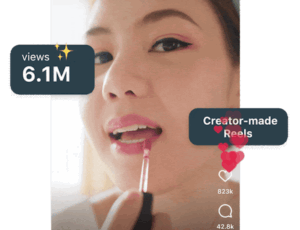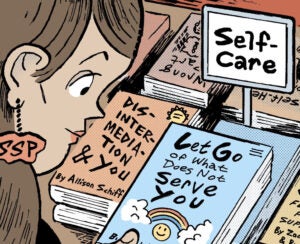The prospect of a Google ad tech breakup went from purely hypothetical to rationally possible.
On Tuesday, the antitrust division of the Department of Justice filed a lawsuit alleging that Google maintains a monopoly over the digital advertising market. Among other remedies, the suit seeks a forced spinoff or sale of certain pieces of Google’s ad stack.
Specifically, the DOJ is calling for Google to divest the Google Ad Manager suite, including Google’s publisher ad server (which the government quaintly refers to as “DFP”) and AdX, Google’s ad exchange. (Google bundled DoubleClick for Publishers and Google Ad Exchange under GAM in 2018.)
Google is pushing back against the allegations, of course.
Dan Taylor, Google’s VP of global ads, argues in a blog post that the DOJ shouldn’t be able to “force companies to reverse 15-year-old investments that they have nurtured and worked hard to make successful, especially when those investments were already reviewed by regulators and allowed to proceed.”
Be that as it may, if Google is indeed compelled to spin off its sell-side ad tech, it’s time to imagine a world in which Google doesn’t own both sides of the advertising ecosystem. (🧵 CafeMedia’s Paul Bannister has an excellent Twitter thread on the subject.)
We asked the experts: Why do you think the DOJ isn’t including Google’s buy-side tech in its suggested remedy, and how would separating Google’s publisher technology into a standalone entity affect the ad ecosystem?
- Paul Bannister, chief strategy officer, CafeMedia
- Shiv Gupta, founder, U of Digital
- Marilois Snowman, CEO & founder, Mediastruction
- Brian Mandelbaum, CEO, Attain
Paul Bannister, chief strategy officer, CafeMedia
It’s still a bit too early to really understand what the impacts would be to the ad ecosystem. That said, Google being forced to divest their sell-side tech would likely not be as good for independent ad tech as independent ad tech thinks it would be.
It’s also not clear that any of this would help publishers much. Perhaps it would create a more competitive ecosystem, but it could also have negative effects by forcing Google’s buy side to become even more insular and spend more money into their O&Os, which would be bad for publishers in general.
As to why the DOJ’s remedy focuses on the sell side, I’m not a lawyer, but I think there are two connected reasons.
AdExchanger Daily
Get our editors’ roundup delivered to your inbox every weekday.
Daily Roundup
One, the case is tightly scoped to the web ad ecosystem, and DV360 and other buy-side tools do a lot of things outside of that ecosystem, including app, CTV and Google O&O. Two, it would be much harder for Google to divest their buy-side tools because they are so integrated into Google’s O&O. If Google didn’t own DV360, how would people buy YouTube?
Shiv Gupta, founder, U of Digital
Google’s sell-side tech is definitely more monopolistic than their buy-side tech. Between the pub-side ad server (GAM aka DFP) and AdX, Google wields a ton of control with publishers.
On the buy side, Google faces much stiffer competition from The Trade Desk (they’re neck and neck in the DSP race), Amazon DSP, Yahoo, Walmart and a whole slew of large emerging buy-side competitors. The DOJ must feel like they have a stronger antitrust case on the sell side. That said, perhaps the DOJ is giving itself “negotiating room,” knowing that Google might rather divest its buy-side tech.
But if Google was to divest its sell-side tech, publishers would be in serious pain in the near term. Switching costs for publishers are high, and there’s a reason most use Google’s tech: It’s easy and it works.
Competitors don’t have nearly the breadth of capabilities that Google offers, even though many companies have tried to replicate the Google pub-side playbook over the years and failed (because, you know, that whole monopoly thing). With publishers already dealing with so much pain, this could be a blow that knocks some of them out entirely – which is definitely not the intended outcome from an antitrust standpoint.
Marilois Snowman, CEO & founder, Mediastruction
Google’s tech stack makes it easy to buy display and search ads, and their marketplace dominance makes it easy to go to one exchange, especially for smaller, local advertisers that don’t have the budget and bandwidth to seek out multiple marketplaces.
Google might argue that unwinding the buy side from the publisher side would create complicated fragmentation, but given the state of API technology, I’m not sure I agree on that point.
Brian Mandelbaum, CEO, Attain (formerly Klover)
The cornerstone of the DOJ’s argument is the allegation that Google tightly controls the entire ecosystem, akin to Morgan Stanley owning both Nasdaq and the individual stocks themselves.
Separating the buy side from the sell side would create a more efficient economic alignment for both publishers and advertisers.
Responses have been lightly edited and condensed.

















